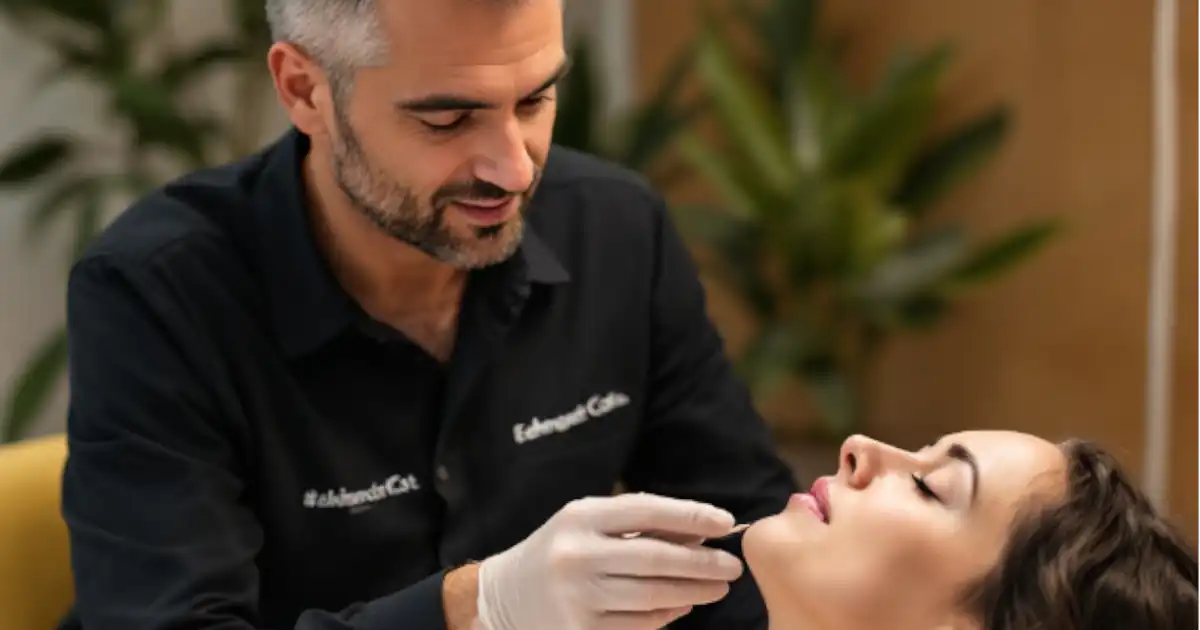Introduction to vaginal bleaching
Vaginal bleaching is a cosmetic procedure that has gained popularity in recent years, particularly among women looking to enhance their appearance and boost their confidence. This practice involves lightening the skin around the vaginal area, which can be influenced by various factors such as hormonal changes, aging, and genetics. In this article, we will delve into the world of vaginal bleaching, discussing its origins, the different methods available, potential risks, and the societal implications associated with this trend.
The Origins of Vaginal Bleaching
Vaginal bleaching finds its roots in a broader cultural context where lighter skin tones are often associated with beauty, desirability, and higher social status. This phenomenon is not limited to Western societies; it can be observed in various cultures worldwide. For instance, in some Asian and African countries, skin-lightening products have been used for decades, with many women believing that lighter skin enhances their attractiveness.The rise of social media and celebrity culture has further fueled the desire for vaginal bleaching. Influencers and celebrities often share their beauty routines and preferences, which can include the practice of vaginal bleaching. As a result, this trend has gained traction, leading to an increasing number of women seeking out these procedures.
Why Do Women Choose Vaginal Bleaching?
The motivations behind vaginal bleaching can vary from person to person. Here are some common reasons:
- Aesthetic Preferences: Many women desire a more uniform skin tone, particularly in intimate areas. They may feel that a lighter shade enhances their overall appearance.
- Confidence Boost: For some, undergoing vaginal bleaching can lead to increased self-esteem and body confidence. Feeling good about one’s appearance can have a significant impact on mental well-being.
- Cultural Influences: As mentioned earlier, societal norms and cultural influences can play a significant role in the desire for lighter skin. Women may feel pressured to conform to these standards to be deemed attractive.
- Post-Childbirth Changes: Some women experience skin darkening around the vaginal area due to hormonal changes during pregnancy. Vaginal bleaching may be seen as a way to restore their pre-pregnancy appearance.
Methods of Vaginal Bleaching
There are several methods available for vaginal bleaching, each with its own set of benefits and risks. Here are some of the most popular procedures:

1. Topical Creams and Gels
Topical creams and gels designed for vaginal bleaching are among the most common methods. These products typically contain ingredients such as hydroquinone, kojic acid, or glycolic acid, which are known for their skin-lightening properties. Users apply these creams directly to the affected areas.Pros:
- Convenient and easy to use at home.
- Non-invasive compared to other methods.
Cons:
- Results can take time, and some products may cause skin irritation or allergic reactions.
- Overuse of certain ingredients, particularly hydroquinone, can lead to adverse effects or skin damage.
2. Laser Treatments
Laser vaginal bleaching is a more advanced procedure that uses laser technology to target pigmentation in the skin. The laser emits light that breaks down melanin, resulting in a lighter skin tone over time.Pros:
- Typically provides faster results compared to topical creams.
- Performed by trained professionals, reducing the risk of improper application.
Cons:
- Can be expensive and may require multiple sessions.
- Potential side effects include redness, swelling, and discomfort.
3. Chemical Peels
Chemical peels involve the application of a chemical solution to the skin, which exfoliates the top layer and promotes new skin growth. This process can help lighten the skin in the vaginal area.Pros:
- Can improve overall skin texture and tone.
- Performed by licensed aestheticians or dermatologists.
Cons:
- Recovery time may be needed, and there is a risk of irritation or infection.
- Results can vary based on the individual’s skin type and the strength of the peel used.
Potential Risks and Side Effects
While vaginal bleaching may seem appealing, it is important to be aware of the potential risks and side effects associated with these procedures. Some of the most common concerns include:
- Skin Irritation: Many products used for vaginal bleaching can cause irritation, redness, or allergic reactions, particularly in sensitive areas.
- Uneven Results: Not all individuals will achieve the same results, and some may experience uneven skin tone after treatment.
- Long-term Effects: Prolonged use of certain bleaching agents, particularly hydroquinone, can lead to skin damage, including thinning of the skin and increased sensitivity.
- Infections: Any procedure that involves the vaginal area carries a risk of infection, especially if proper hygiene is not maintained.
- Psychological Impact: The desire for vaginal bleaching may stem from deeper issues related to self-esteem and body image. It’s important for individuals to assess their motivations and address any underlying concerns.
Societal Implications of Vaginal Bleaching
The rise of vaginal bleaching raises important questions about societal beauty standards and the pressure women face to conform to certain ideals. The notion that lighter skin is more desirable can perpetuate harmful stereotypes and reinforce colorism—a form of discrimination based on skin tone.
- Colorism: Colorism is a deep-seated issue in many cultures, leading to discrimination against individuals with darker skin tones. The popularity of vaginal bleaching can further exacerbate these issues, sending the message that lighter skin is preferable.
- Body Image: The pursuit of an idealized body image can have detrimental effects on women’s mental health. The pressure to conform to societal beauty standards can lead to anxiety, depression, and body dysmorphia.
- Empowerment vs. Conformity: While some women view vaginal bleaching as a form of empowerment and self-expression, others argue that it is a form of conformity to narrow beauty ideals. It’s essential for individuals to critically assess their choices and motivations.
Making an Informed Decision
Before considering vaginal bleaching, it’s crucial to weigh the pros and cons and make an informed decision. Here are some steps to consider:
- Consult a Professional: If you’re thinking about vaginal bleaching, consult with a qualified dermatologist or aesthetician who can provide guidance based on your skin type and individual needs.
- Research Products: If opting for at-home treatments, thoroughly research products and their ingredients. Look for reputable brands and read reviews from other users.
- Prioritize Safety: Ensure that any procedure you undergo is performed in a safe and sterile environment to minimize the risk of infection or complications.
- Assess Motivations: Reflect on your reasons for wanting to pursue vaginal bleaching. Are they based on personal preference, or are they influenced by societal pressures? Understanding your motivations can help you make a more empowered choice.
Conclusion
Vaginal bleaching is a complex and controversial practice that reflects broader societal issues related to beauty standards and self-image. While some women pursue this procedure for aesthetic reasons or to boost their confidence, it is essential to consider the potential risks and implications involved.By making informed choices and critically assessing motivations, individuals can navigate their personal beauty journeys in a way that prioritizes their health, well-being, and self-acceptance. Ultimately, embracing one’s natural beauty, regardless of skin tone, is a powerful statement against societal pressures and a celebration of individuality.
Frequently Asked Questions (FAQs)
Vaginal lightening is a cosmetic procedure aimed at reducing pigmentation in the genital area. Individuals may opt for this procedure for various reasons, including aesthetic preferences, cultural influences, or to enhance self-confidence. Many seek to achieve a more uniform skin tone, believing it contributes to their overall beauty.
What methods are commonly used for lightening the vaginal area?
There are several methods available for achieving a lighter skin tone in the intimate area. These include topical creams containing specific active ingredients, laser treatments that target pigmentation, and chemical peels that exfoliate the skin. Each method has its pros and cons, so it’s crucial to choose the one that best suits individual needs.
Are there any risks associated with these procedures?
Like any cosmetic procedure, vaginal lightening carries potential risks. Common side effects may include skin irritation, allergic reactions, and, in some cases, uneven results. More invasive techniques, such as laser treatments, may also involve discomfort and require recovery time. Consulting a professional can help minimize these risks.
How long do the results of vaginal lightening last?
The duration of results depends on the method used and individual skin types. Topical creams may require ongoing application to maintain results, while procedures like laser treatments might offer longer-lasting effects. Regular follow-ups and proper skincare can help prolong the benefits.
Can natural remedies be effective for achieving a lighter appearance?
Some individuals explore natural remedies, such as lemon juice or yogurt, believing they have lightening properties. However, the effectiveness of these methods is not well-supported by scientific evidence. Moreover, they may cause irritation, especially in sensitive areas, so caution is advised.
Is it essential to consult a dermatologist before attempting vaginal lightening?
Yes, consulting a dermatologist or qualified professional is crucial before undertaking any lightening procedure. They can assess your skin type, discuss potential risks, and recommend the most appropriate treatment options tailored to your individual needs, ensuring a safer experience.READ ALSO: Arch Support Socks: The Ultimate Guide to Comfort and Foot Health
 Touch Blog
Touch Blog



